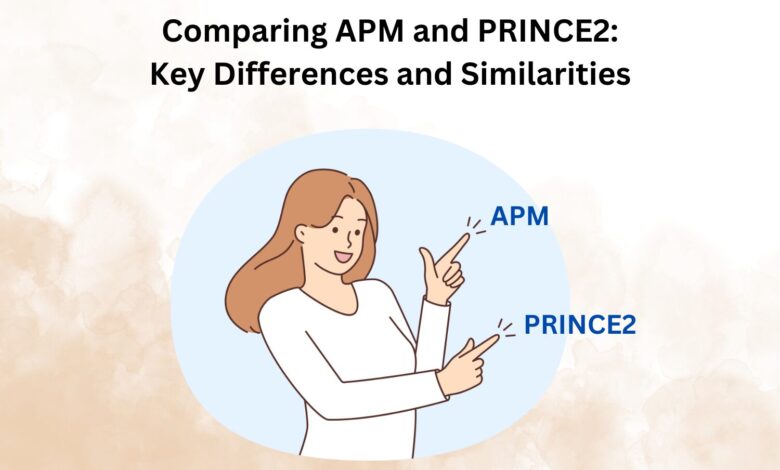Comparing APM and PRINCE2: Key Differences and Similarities

The Projects IN Controlled Environments (PRINCE2) framework and the Association for Project Management (APM) are the two widely used methodologies in project management. Project managers must understand the similarities and differences between these approaches to utilise them effectively according to the project requirements. The success of projects using these methodologies depends upon how project managers implement them in their projects. Professionals can learn more about these methods through courses such as the APM Course or PRINCE2 certification. Project management professionals find this blog informative and helpful as it compares APM vs PRINCE2.
What is APM?
APM emphasizes adaptability, flexibility, and stakeholder engagement. It advocates for tailoring project management practices to suit the unique demands and complexities of each project. APM covers all facets of project management, from initiation and planning to execution and ongoing enhancement.
Core Principles of APM:
- Adaptability: Encourages adjusting methods to meet the project’s specific needs.
- Stakeholder Engagement: Highlights the importance of involving stakeholders throughout the project lifecycle to ensure alignment with organizational goals.
- Continuous Improvement: Focuses on ongoing learning and enhancement to boost team efficiency and project outcomes.
What is PRINCE2?
PRINCE2 offers a structured approach, detailing specific stages, responsibilities, and procedures to ensure project success. It is known for its scalability and flexibility, making it suitable for projects of various sizes and complexities.
Fundamental Elements of PRINCE2:
- Defined Processes: Offers clear processes that span from project initiation to closure.
- Roles and Responsibilities: Clearly defines what is expected from each stakeholder, promoting transparency and efficient management.
- Adaptability: Allows for customization within a defined framework to meet the unique needs and constraints of the project.
Differences Between APM and PRINCE2
- Adaptability and Flexibility: APM is highly adaptable, encouraging project managers to tailor their approach, whereas PRINCE2 provides a more structured framework with specific processes and roles.
- Collaboration and Communication: APM places a strong emphasis on stakeholder participation throughout the project, whereas PRINCE2, while still valuing stakeholder engagement, provides less explicit guidance on this aspect.
- Scalability: PRINCE2 is designed to accommodate projects of any size and complexity, whereas APM is often associated with smaller or more flexible projects.
Similarities Between APM and PRINCE2
- Focus on Project Success: Both methodologies aim to achieve project success by meeting stakeholder expectations and project objectives.
- Continuous Improvement: APM and PRINCE2 advocate for a culture of continuous improvement, encouraging teams to constantly evaluate and enhance their practices.
- Tailoring: Both methodologies recognize the importance of adapting to the specific demands and constraints of each project, with APM offering more flexibility in customization compared to the more formal framework of PRINCE2.
Conclusion
Although PRINCE2 and APM take different approaches to project management, both provide valuable frameworks. PRINCE2 offers a structured approach with defined procedures and roles, whereas APM focuses on flexibility, adaptability, and stakeholder engagement. To complete projects in today’s complex and ever-changing contexts, project managers must be familiar with APM and PRINCE2 and their similarities and distinctions. Project managers can efficiently navigate project management problems using various tools and approaches, such as APM training or PRINCE2 principles. For more information visit: The Knowledge Academy.



